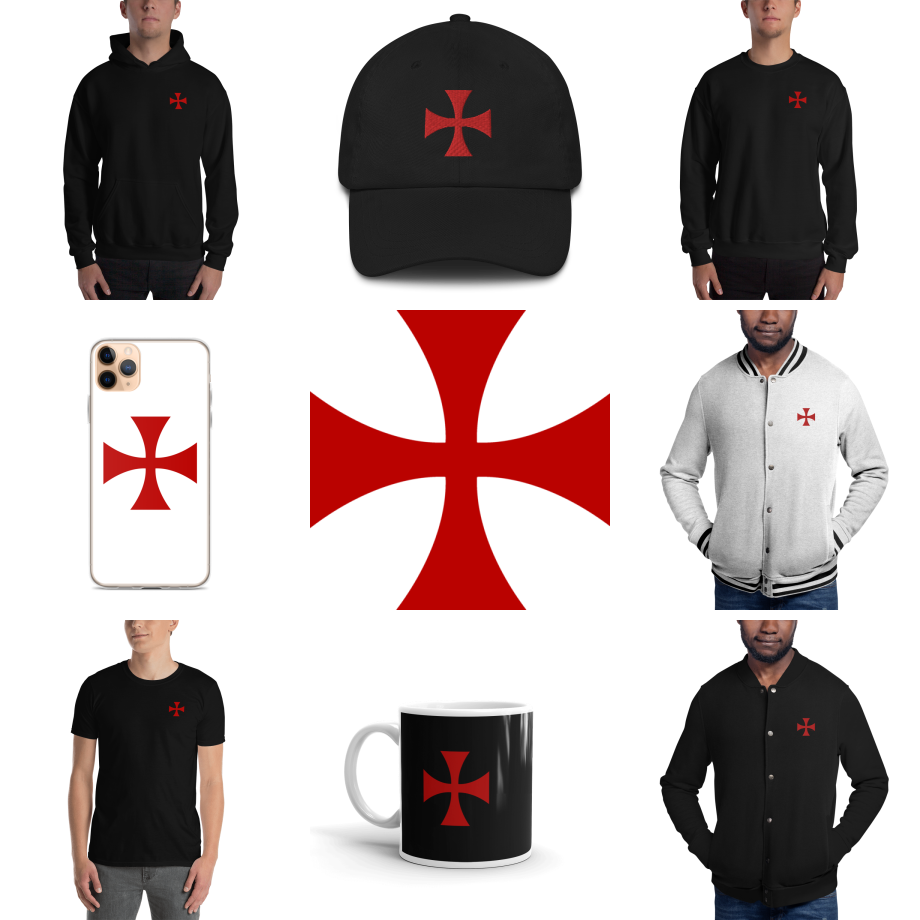Freemasonry and Druidism are two enigmatic, mystical, and unique traditions that have intrigued scholars, spiritual seekers, and enthusiasts alike for centuries. Due to their mysterious natures, speculative theories about their connections have been prevalent.
Freemasonry is a fraternal organization that has its roots in the guilds of medieval stonemasons. Over time, these trade guilds evolved into secret societies with profound philosophical and moral teachings which attracted people from various backgrounds.
The organization still preserves much of its original symbolism derived from stonemasonry, such as the square, compass, plumb, level, and other working tools, which serve as allegoric representations of moral and ethical principles.
As Freemasonry progressed, it extended its symbolism to encompass more universal concepts, reflecting its non-denominational nature. Freemasons are expected to believe in a Supreme Being, but the fraternity does not mandate any particular religious belief.
Druidism, on the other hand, refers to the religious and spiritual practices of the ancient Celts, specifically the Druids. As the priestly caste, Druids served as the spiritual leaders, keepers of knowledge, advisers, and even judges. Little is known about the original beliefs and practices of the Druids, mainly due to the lack of written records. Much of our understanding of their practices comes from legends, folktales, and archaeological findings.
Celtic Druids
The Celtic Druids were an essential part of ancient Celtic society, which was widespread across Europe during the Iron Age and early medieval period. Primarily concentrated in the British Isles, Gaul (France), and Ireland, they were the learned caste and held influential roles in the daily lives of the Celts.
As spiritual leaders and intermediaries between the living and the spiritual world, they were responsible for performing rites and ceremonies to appease the various Celtic deities. The Druids were said to have remarkable wisdom, knowledge of astronomy, natural sciences, and healing abilities. They acted as judges and presided over disputes, and they were also consulted during times of war.
Druidic knowledge was passed down through a long oral tradition to avoid written records, which is why much of their practices and beliefs remain unknown. The limited understanding of the Druids comes primarily from Roman and Greek historians, folklore, and archaeological findings.
Ancient Druids

Imaginative illustration of ‘An Arch Druid in His Judicial Habit’, from The Costume of the Original Inhabitants of the British Islands by S.R. Meyrick and C.H. Smith (1815)
IMAGE LINKED: wikimedia Attribution 4.0 International (CC BY 4.0)
The ancient Druids were part of a long-established lineage, stretching as far back as the second millennium BCE. Some scholars believe that the origins of the Druids can be traced to the late Bronze Age, around 1500 BCE. This coincides with the emergence of the Celtic people in central Europe.
The ancient Druids played a central role in the Celtic societies, and their influence was evident in the spiritual, legal, educational, and political aspects of Celtic life. They were held in high regard, and their knowledge and wisdom were sought after by kings and chieftains.
The Druids were deeply connected to the natural world, and their rituals often took place in sacred groves, near waterways and wells, or within ceremonial stone circles like Stonehenge. The Druids revered the oak tree and saw mistletoe growing on its branches as a symbol of life and fertility.
The ancient Druids were eventually suppressed by the Roman Empire, with the Romans destroying many of the Druidic sanctuaries during their conquest of Gaul and Britain. Over time, the influence of Christianity led to the Druids’ diminishing status, but their legends and folktales continued to inspire generations for centuries.
Famous Druids
Although much of the history surrounding the Druids is shrouded in mystery, there are a few figures known either as Druids themselves or associated with the Druidic tradition.
– Divitiacus was a Gallic Druid who lived during the 1st century BCE. He was renowned for his knowledge of natural sciences and philosophy, and he even visited Rome as an ambassador on behalf of a Gaulish tribe. He was mentioned by Julius Caesar in his account of the Gallic Wars. Divitiacus is the only druid from antiquity whose existence is attested by name.
– Merlin, the famous mythical wizard and adviser of King Arthur in Arthurian legends, is often depicted as having Druidic knowledge and powers.
– Cormac mac Airt, a mythical Irish high king (3rd century CE) who associated with druids for their prophetic abilities
Modern Druids
Modern Druidry, or Neo-Druidism, is a spiritual movement that seeks to revive the ancient Druidic practices and beliefs. It began to emerge during the 18th century in conjunction with various European cultural revivals. The movement gained momentum during the 20th century and has continued to evolve, with organizations such as the Order of Bards, Ovates and Druids and the British Druid Order.
Modern Druidry incorporates a wide range of beliefs and practices, often emphasizing the connection with the natural world, the cycles of the seasons, and ancestral traditions. Rituals are designed to harmonize with Earth’s energies, with seasonal celebrations such as the solstices and equinoxes.
Contemporary Druids also focus on personal development and spiritual growth, often drawing inspiration from a wide range of sources, including various spiritual and esoteric traditions.
It is important to note that while modern Druidry seeks to revive and reconstruct ancient Druidic beliefs and practices, it is inherently a contemporary spiritual movement. Rather than being an authentic continuation of the ancient Druid tradition, it represents the millennia-long evolution of spiritual and cultural ideas inspired by the enigmatic and wise Druids of ancient times.
The Attraction between Freemasons and Druids
By the 18th and 19th centuries, cultural movements and revivals in Europe turned the attention of some Freemasons to the enigmatic Druids. The Freemasons were especially interested in the rich symbolism and ritualistic practices of the Druids, which they believed resonated with their own.
Several factors might have contributed to this mounting interest:
1. Freemasonry’s fascination with ancient civilizations
2. The romanticization of Druids as custodians of ancient wisdom
3. The desire to associate Freemasonry with the noble heritage of the Druids
This fascination gave birth to various Masonic degrees, orders, and societies that directly or indirectly drew their themes and principles from Druidism. The next sections will discuss some noteworthy examples of these Masonic (or pseudo-Masonic) organizations.
Societas Rosicruciana in Anglia (SRIA)
The Societas Rosicruciana in Anglia is a Masonic society founded in 1866 with strong connections to Druidism. It incorporates cryptic symbols, allegorical rituals, and ancient wisdom stemming from an array of esoteric traditions, including Hermeticism, Gnosticism, Kabbalah, Alchemy, and Druidism.
The SRIA drew inspiration from the Druidic themes of secrecy, initiation, and the pursuit of knowledge.
The SRIA’s connection to Druidism is further exemplified by its affiliation with the Ancient and Archaeological Order of Druids (AAOD). In 1874, a founder member of the SRIA, Robert Wentworth Little, gathered together other interested members of Masonry and founded a Druidic Society which he called the Ancient and Archaeological Order of Druids (AAOD). Although many Masons were part of the order, there was no obligation to be a Freemason to join.
The Ancient and Archaeological Order of Druids (AAOD) continued and in 1966, was merged with the Literary and Archaeological Order of Druids (LAOD). It is a flourishing Order to this day.
From the LAOD website:
‘LAOD is deeply esoteric and mystical, with its rituals and teachings descending from Robert Wentworth Little in the 1800s, through Desmond Bourke in the late 1900s, through to today.
The rituals within LAOD refer to God (or in the Welsh “Duw”). Members and candidates for membership, therefore, must have a belief in, and a desire to communicate with, the supreme being that we lovingly refer to as God.
LAOD in no way conflicts with the religions of the Abrahamic faiths. The vast majority of our members identify as Christian and many are members of other Judeo-Christian esoteric Orders.
LOAD is not a masonic Order, carries no resemblance to freemasonry and does not require membership in any other Order (Masonic or otherwise).
The Druid Order (aka the Druids of primrose Hill)
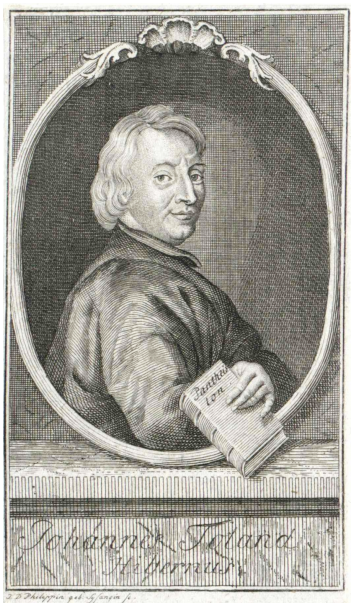
John Toland. By J. D. Philippin, born Sysang (1729 – 1791) – http://www.carboneria.it/Tolandfr.htm
IMAGE LINKED: wikimedia Attribution 4.0 International (CC BY 4.0)
It is said that on 21 September 1716, Irish philosopher and Freethinker John Toland stood on Primrose Hill and urged Druids from across the British Isles to meet at the Apple Tree Tavern in London ‘a year and a day hence’ to form An Druidh Uileach Braithreachas, the Mother Grove of the Ancient Druid Order.
So, on 22 September 1717, Toland was elected Chief of the reconstituted Order. Toland, who was a Freemason, remained as Chief Druid until 1722, when antiquarian, archaeologist and Freemason William Stukeley took over until 1765.
There is some controversy over the timeline of the Druid Order, with some historians, notably Ronald Hutton who states that the Druid Order in its current form started around 1909 or 1912 when George Watson MacGregor Reid (1862-1946) established the group.
Whatever the legend, it is interesting to see the possible link (however spurious) between Freemasonry and Druidism – note the particular location and year Toland chose for the meeting (the Apple Tree Tavern) and the year 1717.
The Druid Order is still in existence today and is based in London.
Ancient Order of Druids (AOD)
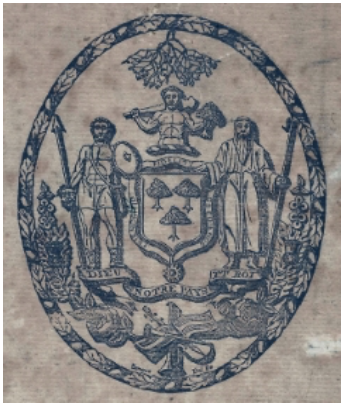
Coat of arms of the Ancient Order of Druids, circa 1830. AOD Archives. By A.O.D. – A.O.D. archives,
IMAGE LINKED: wikimedia Attribution 4.0 International (CC BY 4.0)
The Ancient Order of Druids is a fraternal organization founded in London in 1781, which aims to promote benevolence, friendship, and brotherhood among its members.
The AOD was structured similarly to Freemasonry and took inspiration from an array of diverse traditions, including the ancient Druids and the Knights Templar.
Druidic themes significantly influenced the rituals, costumes, and organization of the AOD. For instance, they recognized the summer and winter solstices and autumn equinox as key dates for various events.
They held ceremonies within stone circles like Stonehenge and created a hierarchy, which mirrored the ancient Druidic caste system.
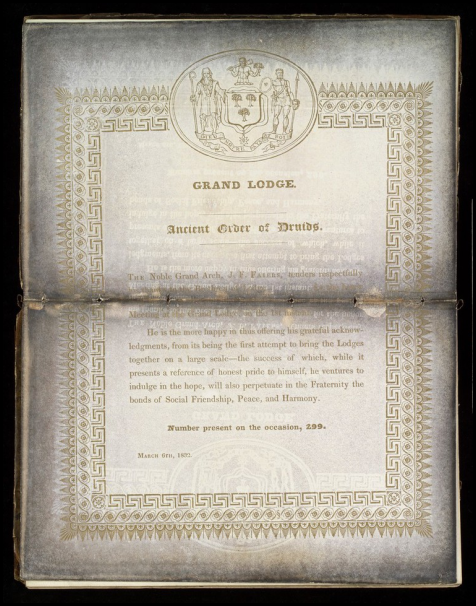
Druids’ magazine: a compendium of druidical proceedings.
IMAGE LINKED: wellcome collection Attribution 4.0 International (CC BY 4.0)
United Ancient Order of Druids (UAOD)
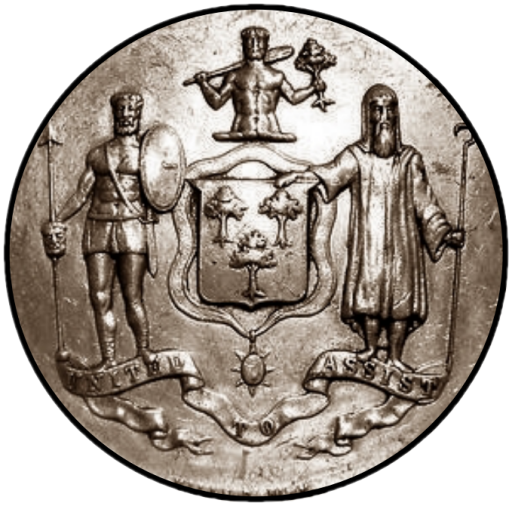
UAOD coat of arms + motto (1834) By Chartix – Own work,
IMAGE LINKED: wikimedia Attribution 4.0 International (CC BY 4.0)
In 1833 a schism occurred within the Ancient Order of Druids (AOD) and the United Ancient Order of Druids (UAOD) was founded.
A significant part of the members of the AOD decided to create a druidic order more open to different social classes, structured as a benefit society and registered by government. During the first decades, the UAOD kept the same emblem as the AOD (a shield with three oaks surrounded by a Celtic warrior and a druid), changing the motto to united to assist.
Very soon, the UAOD proved to be a great success and many of its members travelling abroad created new lodges in United States of America (1839), Australia (1851), New Zealand, and German empire (1872).
In 1858, the UAOD separated itself in two parts, and a new fraternal society, the Order of Druids was created. After World War II the organisation faded, as the generalisation of the welfare state provided people with all that was its purpose.
Its last Lodge in England, closed in 1999 but the UAOD still remains in several countries as the United States, Australia, Germany, and Northern European countries.
[Source: Wikipedia]
Order of Druids (OD)

Order of Druids emblem
IMAGE LINKED: wikimedia Attribution 4.0 International (CC BY 4.0)
Finally, we have the Order of Druids (OD) a fraternal and benefit organisation founded in England, in 1858 after a schism with the United Ancient Order of Druids.
The order’s emblem was a Druid with a harp and a Celtic warrior with the national emblems of United Kingdom, Australia, India and the United States.
During the Victorian era, the most important section was the Sheffield Equalized Independent Druids.
Between the two World Wars, this society was one of the three main Druidic fraternal societies in the British empire. It was heavily influential in Sheffield and the coalfields of England. After World War II and the introduction of the welfare state, it faded, and the last lodges closed during the 1970s.
[Source: Wikipedia]
Joseph Smith, Freemasonry, and Druidism
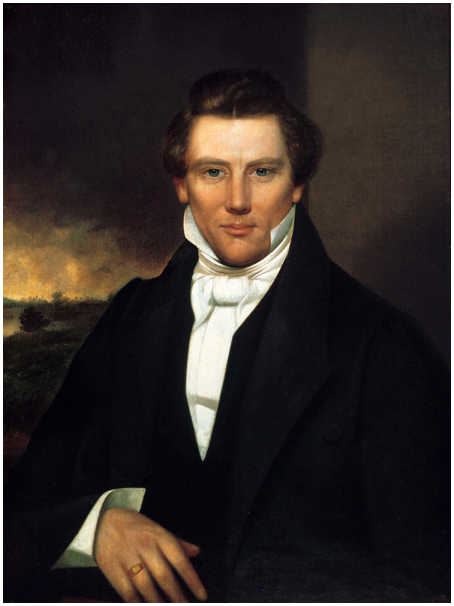
Joseph Smith – unknown painter, circa 1842. The original is owned by the Community of Christ archives.
IMAGE LINKED: wikimedia Attribution 4.0 International (CC BY 4.0)
Joseph Smith, the founder of the Latter-day Saint movement, was an adherent of multiple esoteric influences, with deep roots in Freemasonry. He became a Master Mason in 1842 and incorporated elements of Masonic rituals into the ceremonies of the Church of Jesus Christ of Latter-day Saints (LDS Church).
There is evidence to suggest that Smith also incorporated Druidic philosophies and concepts into his religious beliefs.
The Book of Mormon recounts the story of a lost tribe of Israel who migrated to ancient America, echoing the Druidic myths of a lost race that crossed the Atlantic and established a civilization in Britain.
Differences between Freemasonry and Druidism
Although there are many similarities and connections between Freemasonry and Druidism, it is crucial to recognize their stark differences.
1. Freemasonry has never claimed to represent itself as a singular religious tradition, whereas Druidism represents the religious and spiritual practices of the ancient Celts.
2. No evidence suggests that the ancient Druids were a fraternal brotherhood like the Freemasons, nor is there historical authentication of their rituals and practices.
Rapprochement or Merely an Inspiration?
While the connections between Freemasonry and Druidism are fascinating, it’s essential to recognize that these connections don’t imply that Freemasonry is a continuation of ancient Druidic traditions.
Instead, the organizations that emerged from the blending of these themes should be perceived as separate entities, distinct from both Freemasonry and Druidism, taking inspiration from both, but not fully assimilated with either.
To conclude, “freemasonry and druidism” connections primarily stem from the 18th and 19th centuries when Freemasons took an interest in Druidic themes. Although they share some similarities and aspects, such as symbolism, rituals, moral teachings, and philosophical undertones, their historical backgrounds and core philosophies are inherently different.
The organizations that include both Masonic and Druidic influences should be viewed as separately inspired entities rather than a direct continuation of the ancient Druid tradition.
Resources:
The Druid Order: http://thedruidorder.org/index.html
Literary and Archaeological Order of Druids (LAOD): https://www.archgrove.org/
Article by: Margaret S.

Margaret S. is a retired lecturer and devotes much of her time to theological and philosophical writing.
She was made a Freemason in the International Order of Freemasonry for Men and Women - Le Droit Humain.
(Margaret S. is her pen name for all her masonic papers)

Recent Articles: masonic history
 Protestantism and Masonic Influence in Brazil Discover the untold story of how Freemasons helped Southern Americans immigrate to Brazil post-Civil War, fostering economic and educational growth in Santa Bárbara d’Oeste and Americana. Learn about their pivotal role in establishing Protestant churches and ensuring the secularity of the Brazilian State amidst a Catholic-dominated society. |
 Explore the proper use of the sacred word in Brazilian Freemasonry through an analysis of Masonic literature and Bible translations. Uncover the errors in pronunciation and the need for corrections to maintain liturgical coherence in rituals. Discover insights on Masonry, rituals, and the Hebrew word Boaz. |
 Narratives of History |
 A Very Royal Sesquicentenary |
 Unveiling the Enigma: Discover the Royal Society's Legacy and its Impact on Science. Delve into the fascinating history of the Royal Society, the prestigious UK academy shaping scientific progress since 1660. Explore its pivotal role in advancing knowledge, fostering collaboration, and unlocking the secrets of the universe. Prepare to be amazed! |
 Knights Templar in Freemasonry Uncover the Mysteries of the Knights Templar in Freemasonry! Delve into the intriguing world where chivalry and symbolism intertwine. Discover the captivating rituals and ancient secrets behind the Knights Templar Masonic Orders. Explore the historical connection and delve into the enigmatic narratives that continue to fascinate enthusiasts today. Unveil the hidden truths now! |
 The Royal Arch stands as the rainbow of promise in the Ritual; it stands as the promise of the resurrection; of that which was lost and that it shall be recovered. The question arises as to whether the Master's Word was originally communicated in the Third Degree? On this point there is some diversity of opinion. Originally published in 1915, this insight into the Fourth Degree – the Holy Royal Arch – is as relevant today as it was over 100 years ago. |
 Unveiling the Mysteries of Druidism: Discover the Intriguing Connection with Freemasonry. Explore the ancient spiritual practice of Druidism and its fascinating ties to the enigmatic world of Freemasonry. Delve into the shared symbolism and rituals that have captivated minds for centuries. Unlock the secrets of these intertwined traditions today! |
 Uncover the legacy of freestone masons and their pivotal role in crafting medieval cathedrals. Discover the artistry behind their techniques, the hierarchy within their craft, and the enduring impact of their intricate carvings. A deep dive into the world of these master craftsmen awaits you! |
 Unearth the intriguing journey from Vincha Culture to Freemasonry. Discover how ancient building methods intertwine with modern Masonic philosophies. This exploration will shed light on the fascinating link between the Serbian term "shestarenye" and the symbolic significance of the compass in Freemasonry. |
 Freemasonry and the Illuminati Unravel the enigmatic world of Freemasonry and the Illuminati in our latest exposé. Dive into centuries-old mysteries, debunk conspiracy theories, and discover the truth behind these elusive societies. Are they puppet masters or mere myths? Join us as we dissect history and fact from fiction. |
 The Île des Templiers, or “Island of the Templars” lies within a leafy park in Paris. The execution site of Jacques du Molay, the last Grand Master of the Knights’ Templar bears a plaque with the epitaph ‘A cet endroit / Jacques de Molay / Dernier grand maître / de l'ordre du temple / a été brûlé le 18 Mars 1314’ (‘In this location / Jacques de Molay / Last grand master / of the order of the temple / was burned on 18 March 1314’) |
 Operative Progressions to Speculative Masonry Both Operative and Speculative Masonry are an important part of the modern fraternity of Freemasonry, which combines elements of both traditions. Today, Freemasonry is a fraternity that is open to men of good character, who are interested in personal development and in making a positive contribution to their communities. |
 General Regulations of a Free Mason, 1723 General Regulations of a Free Mason as contained in Anderson's Constitutions of the Freemasons, published 1723. the Regulations are of great historical interest. Compiled by George Payne, the second Grand Master of the Premier Grand Lodge of England, they were printed in 1722/3, thus published just over five years after the formation of the Grand Lodge 1717. |
 The Genesis of the 1723 Book of Constitutions 2023, marks the three hundredth anniversary of the publication of the first printed Book of Constitutions of the Grand Lodge formally established in London two years previously. This is an anniversary whose significance extends beyond freemasonry. A paper by Andrew Prescott |
 The Ritual of the Operative Free Masons - P3 Existing Operative Free Masons. The ritual I am about to refer, is that of "The Worshipful Society of Free Masons, Rough Masons, Wallers, Slaters, Paviors, Plaisterers, and Bricklayers." By Thomas Carr, M.D., P. M. Honorary Member of the Guild of Operative Free Masons |
 Liberté chérie was a Masonic Lodge founded in 1943 by Belgian Resistance fighters and other political prisoners at Esterwegen concentration camp. It was one of the few lodges of Freemasons founded within a Nazi concentration camp during the Second World War. |
 The Ritual of the Operative Free Masons - P2 If anyone doubts the fact that the formation of Speculative Free Masonry was due to and based upon Operative Free Masonry, it is quite easy to convince him of his error if he will only study the first Book of Constitutions. By Thomas Carr, M.D., P. M. Honorary Member of the Guild of Operative Free Masons |
 In 1881, Freemasonry rose from the ashes of a fire in the mining town of Kokomo, Summit County, Colorado. Corinthian Lodge No. 42, along with Kokomo, no longer exists but it holds the record of having been – at an elevation of 10,618 feet – the highest Masonic Lodge in the USA. |
 The Huguenots and Early Modern Freemasonry The Huguenots influence in the development of early modern Freemasonry at the time of the formation of the Grand Lodge in London around 1717 / 1723. |
 November is a month of reflection – perhaps due to the fact that we are getting close to the years' end – but also because Remembrance / Armistice Day (11 November) is a significant date in most countries' diaries. |
 Speculative Freemasonry, as practise by Grand Lodge of England, was officially born just over three hundred years ago, is today an international organisation, counting over six million members. It has been subjected to persecution, suppression, and abolition throughout its history. In its infancy, only a couple of decades after its official birth, it had already become a target. |
 The Ritual of the Operative Free Masons - P1 The original paper was written, first, to prove that Speculative Free Masonry was derived from Operative Free Masonry; second, to give some account of the Operative Free Masons, of their Ritual, and of their customs. By Thomas Carr, M.D., P. M. Honorary Member of the Guild of Operative Free Masons |
 American Fraternalism in the 19th and Early 20th Centuries The late 19th and early 20th centuries in the United States has been called the "Golden Age of Fraternalism." How did this come about and why was the idea of joining a fraternal organization so popular? We will explore this question and examine the regalia used by many fraternal organizations in this period. |
 Societas Draconistarum, meaning "Society of the Dragonists"– was a chivalric Order for selected nobility, founded in 1408 by Sigismund von Luxembourg, who through marriage became the King of Hungary (1387–1437) and later Holy Roman Emperor. The Order was fashioned after the military orders of the Crusades, requiring its initiates to defend the cross and fight the enemies of Christianity, in particular the Ottoman Empire. |
 The Perjured Free Mason Detected Was Samuel Prichard a perjured individual, or simply a misguided Freemason? Prichard's book "Free Masonry Dissected" published in 1730, is now used by many Masonic historians as a source of reference with regards to the introduction of the third degree into the Craft. But at the time it was published in 1730, it was not so well received by members of the Grand Lodge of England. |
 17th century and the Holy Royal Arch This article focuses on a period of transition between a point in time when we can safely and historically identify the first formation of what could be called as the ‘Royal Arch’ and the historical events that have preceded it. |
 Most Freemasons have heard the terms 'Operative' and 'Speculative' Masons, and this article helps to understand the difference: |
 Roberts' Constitutions of Freemasonry 1722 Published a year before Anderson's Constitutions, The Old Constitutions Belonging to the Ancient and Honourable SOCIETY OF Free and Accepted MASONS. Originally printed in London England; Sold by J. Roberts, in Warwick-Lane, MDCCXXII.(1722) |
 From 'Songs of religion and life', 1876 by John Stuart Blackie (1809-1895) |
 On the Antiquity of Masonic Symbolism Is the Symbolism of Masonry an inheritance derived from the old Masons who flourished before the era of the Grand Lodges (1717); or has it been borrowed from the Rosicrucians or others, after 1717? |
 Mason's Marks – from Egypt to Europe? Mason's marks have been a source of intrigue, not only to Freemasons but to historians and archaeologists. The use of simple pictograms have been employed for millennia by artisans to identify their work. But where did they originate and why? |
 The White House Foundation Stones Further to the articles in our series on the history of the stone masons, we have a rather intriguing addition. During the 1950's renovation of the White House, President Truman retrieved more than 100 stone blocks with stonemasons marks. |
 What the Goose and Gridiron Tavern is in the ancient annals of London Freemasonry, The Green Dragon Tavern is to the memories of the Free-mason, of Boston and New England. |
 Auschwitz concentration camp: video photo article taken in 2013 |
 There are two things of importance happening this day - 27 January |
 Two approaches regarding the understanding of Freemasonry |
 Masonic Research in England c1930 An article which appeared in an American Masonic magazine, c1930 and which was reproduced in England, provoking a little controversy. |
 Masonic bookplates the ‘Brethren’s spiritual coats of arms and marks’ |
 The Unlawful Societies Act of 1799 Rebellious Freemasons and the 21st century |
 In 1912, Sarah Dowd of Dromore, Ireland, found a Masonic jewel dated 1517 - a date two hundred years before the establishment of Grand Lodge... |
 Freemasonry and Fascist Regime Interesting speech by the famous historian Prof. Aldo A. Mola, who links the fascist regime with the Masonic Associations. |
 Was famous Russian poet Alexander Pushkin a Freemason? And if so, was he a member of the lodge ‘for which all the lodges in Russia were destroyed’? |
 The Importance of Masonic Research Why is accurate - or authentic - Masonic research so important? The importance of making a daily advancement in Masonic knowledge is something that The Square is passionate about promoting. |
 The Antient Noble Order of the Gormogons had a brief existence in the eighteenth century; they left few records or accomplishments, |
masonic knowledge
to be a better citizen of the world
share the square with two brothers

click image to open email app on mobile device
